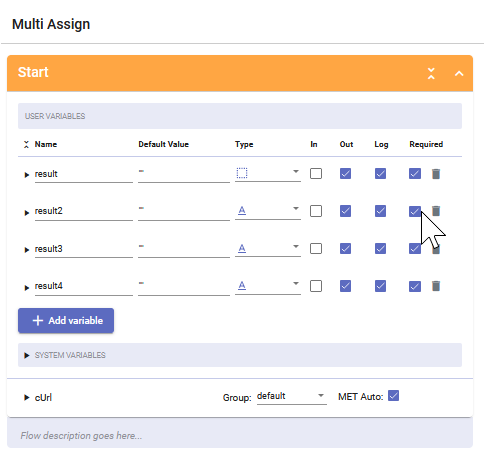Next Level JS Tricks
Multiple Assignments
When you have multiple variables to assign at the same time, you can combine the assignment operations into a single block using arrays.
Large Logical Expressions
Large expressions, like you might use in an If block, can be formatted using JavaScript conventions. You can use parentheses to group sub-expressions to make sure that everything is evaluated in the proper order.
($Upgrade_This_Month && (($Current_Year < $File_Year) || ($Current_Year == $File_Year && $Current_Month < $File_Month)))
This expression would evaluate to true when:
$Upgrade_This_Month is true AND either
$Current_Yearis less than$File_Year
OR
$Current_Yearis the same as$File_YearAND$Current_Monthis less than$File_Month
Ternary Operator (Assign Conditional)
The ternary operator takes three operands: a condition followed by a question mark (?), then an expression to execute if the condition is true followed by a colon (:), and finally the expression to execute if the condition is false. This operator can be used in place of an If block.
Examples:
$result.hasOwnProperty( “quantity” ) ? $result.quantity : 0
If the $result variable has a property called quantity, then use the value of $result.quantity, otherwise use zero
List keys in a JSON Object
Say you have a javascript object, with a bunch of key value pairs. How do you key an array of only its keys? You can use Object.keys(someObj) to get an array of only the keys.
var $someObj = {
dogs:3,
cats:5,
whales:1
}
var keys_only = Object.keys($someObj);
// keys_only evaluates to ==> ["dogs","cats","whales"]
Reduce an Array
Say you have an array of things, and want some result that is derived by operating on each element in the array, successively. We can use someArray.reduce((previousValue,currentValue) => f(previousValue,currentValue),initialValue)
Examples:
Say we want to sum every element in an array. Heres one way:
var nums = [2,4,6,8];
var sum; // what we want to calculate
sum = 0; // initial value
nums.forEach(eachNumber => {
sum = sum + eachNumber
});
print(sum) // sum evaluates to ==> 2+4+6+8 = 20.
Theres a better way:
var nums = [2,4,6,8]; var sum = nums.reduce((a, b) => a+b, 0); print(sum) // sum evaluates to ==> 2+4+6+8 = 20.
Say we want to an average of every element in an array. Heres one way:
var nums = [2,4,6,8];
var avg; // what we want to calculate
avg = 0; // initial value
nums.forEach(eachNumber => {
avg = avg + eachNumber;
});
// divide by number of things
var avg = avg / nums.length;
print(avg) // average evaluates to ==> 20/4 = 5.
Theres a better way:
var nums = [2,4,6,8]; var avg = nums.reduce((a, b) => (a+b),0) / nums.length print(avg) // avg evaluates to ==> (2+4+6+8)/4 = 5.
String Operations
Split is often times useful in unexpected ways. Say I want to isolate the name of a cat, given some path to the cat. Heres how:
var $path = "animal/cat/tom"
// Make an array, thats the string split by some character. We'll split by "/".
var $splitPath = $path.split("/");
print($splitPath)
// I'll get ["animal","cat","tom"]
//How do we get only the last element?
// Get the value at index of (length_of_array - 1)
// must be length - 1, because arrays start at index 0.
print($splitPath[$splitPath.length-1])
// I'll get "tom"
Likewise, I can do the inverse of split and join elements of an array into a string. Let's see an example.
var $stuff = ["animal","cat","tom"]
print( stuff.join(" AND ") )
// I'll get ==> "animal AND cat AND tom"



